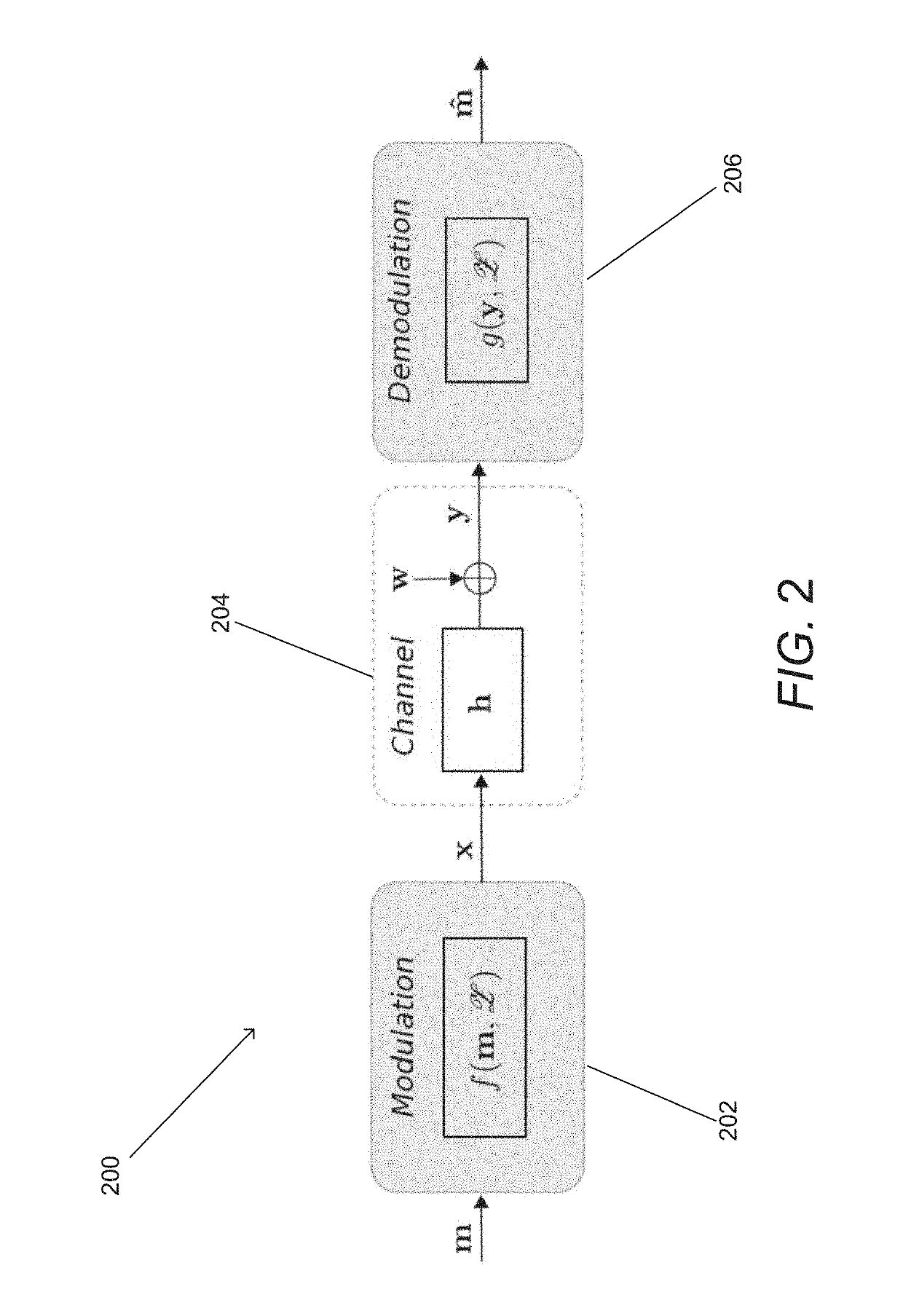Systems and Methods for Communicating by Modulating Data on Zeros
- Summary
- Abstract
- Description
- Claims
- Application Information
AI Technical Summary
Benefits of technology
Problems solved by technology
Method used
Image
Examples
Embodiment Construction
[0062]Turning now to the drawings, systems and methods for communicating data by transmitting waveforms, where the data is represented by the zeros of the z-transform of the transmitted waveform in accordance with various embodiments of the invention are illustrated. The process of modulating data on the zeros of the z transform of the transmitted signal can be referred to as a Modulation on Zeros (MOZ) modulation scheme. A number of MOZ schemes can be implemented in accordance with various embodiments of the invention.
[0063]In many embodiments, the transmitter modulates data onto conjugate-reciprocal zeros of the z-transform of the transmitted signal. Modulation on Conjugate-reciprocal Zeros can be referred to as a MOCZ modulation (pronounced “Moxie”). In several embodiments, MOCZ involves selecting between transmission of conjugate-reciprocal pairs of zeros (in the complex plane) and thereby transmitting a signal that is constructed using a polynomial whose degree is the number of...
PUM
 Login to View More
Login to View More Abstract
Description
Claims
Application Information
 Login to View More
Login to View More - R&D
- Intellectual Property
- Life Sciences
- Materials
- Tech Scout
- Unparalleled Data Quality
- Higher Quality Content
- 60% Fewer Hallucinations
Browse by: Latest US Patents, China's latest patents, Technical Efficacy Thesaurus, Application Domain, Technology Topic, Popular Technical Reports.
© 2025 PatSnap. All rights reserved.Legal|Privacy policy|Modern Slavery Act Transparency Statement|Sitemap|About US| Contact US: help@patsnap.com



